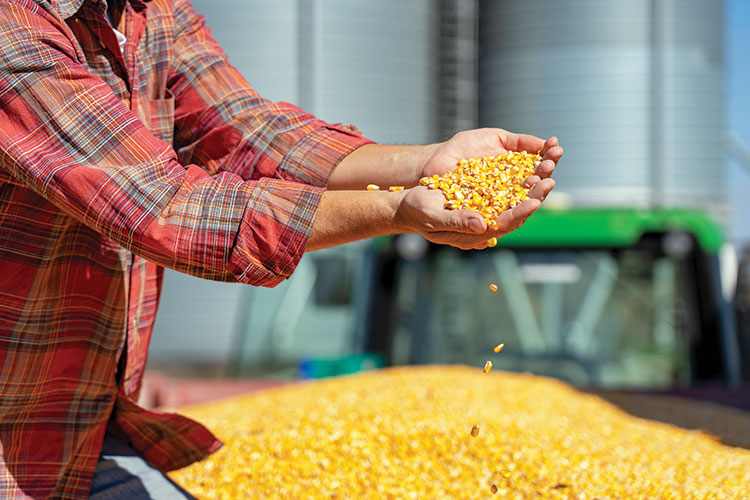
When filling out an application for a state driver’s license renewal and REAL ID, an applicant needs to ensure that each of the spots on the application are completed, required documents are on hand, and the correct application boxes are checked. Then with the process completed and federal clearance, the resulting REAL ID is acceptable identification to fly within the U.S. or visit federal buildings.
One could think of seed corn decision-making in this way. For appropriate seed technology evaluation, many different items are required prior to takeoff. In seed corn decision-making, the required items to bring to the table relate to understanding total income and expenses.
Sometimes, advisory groups fall short in evaluating seed options if they miss critical components needed to calculate cash flow projections. For example, a farm might consider milk production gain versus higher seed costs. The resulting calculation appeared to easily cash flow. However, the farm forgot to include costs associated with higher dry matter intake and acreage needed to feed the herd.
As a result of such situations, the University of Wisconsin-Extension group built a cash flow projection worksheet that highlights all the necessary inputs for a complete seed corn cash flow projection. The tool allows the user to compare two different seed choices, and is accessible via Joe Lauer’s University of Wisconsin-Extension website on.hoards.com/milk-yield-calculator.
The tool clarifies several factors that might be overlooked, such as total expenses based upon crop production costs per acre, herd size, and variable silage dry matter intake associated with performance differences. The total cost associated with corn silage and economic impact realized in using the worksheet has been striking, with corn silage expenses totaling between roughly $30,000 and $50,000-plus for every 100 cows, depending on silage intake and yield.
Margins are too thin to not find corn silage feed cost per hundredweight opportunities. The major points that need to be considered are as follows.
Outputs considered
The income or asset potential with seed corn choices requires your nutritionist’s help. Beyond raw milk production per cow, ensure the butterfat or protein components and the prices per pound that your farm gets paid are accurately accounted for in projections. The tool relies on a nutritionist’s milk production estimate for discerning between different hybrids.
Make sure your nutritionist is using robust silage nutrition analyses in projecting side-by-side performance for a hybrid. A single sample from a neighbor or seed sales representative is not suitable. Use nutrition analyses from plots harvested on your farm, if possible. Your nutritionist can also use feed analysis laboratory database values, regional seed plot silage analysis results, or results from university hybrid trials.
Hybrid performance and diet projections should be dialed in for your farm. In doing so, also ask your nutritionist to calculate non-corn silage diet costs per pound of dry matter.
This is an essential input in the worksheet. The reason being, if one hybrid offers substantially improved fiber or starch digestibility, the non-corn silage feeds and costs may change due to metabolizable protein gains.
If one hybrid is projected to raise milk production, don’t forget about the greater dry matter intakes associated with milk gains. The University of Wisconsin worksheet allows for all these factors to be considered, estimating higher dry matter intake at constant feed conversion ratio. This can be adjusted by the user.
Expenses beyond seed costs
The expense or liability side of a seed corn partial budget includes seed costs, crop protection, and other crop production costs. If one hybrid choice also needs additional crop protection budgeted, this cost can be taken into account.
Ultimately, determining total crop production cost per acre can prove tricky. However, a worksheet from Iowa State University Extension (Ag Decision Maker File A1-20) simplifies the process by detailing all the input costs. It is available here: on.hoards.com/decisionmaker.
With total crop production costs per acre determined, silage dry matter intake and yield are other important factors to include to sum up the total corn silage cost for your herd. The University of Wisconsin worksheet does this for you and allows the user to toggle corn silage yield drag up or down to make quick comparisons, if assumptions change.
Does it cash flow?
The worksheet was initially structured to compare brown midrib (BMR) corn seed to conventional corn seed. Upon download, the data within the tool comes from a published meta-analysis that compared hybrid types; however, it is meant to be a model.
The user should fine-tune the scenario for your herd and situation to determine resulting cash flow per cow or for the herd over a year. The tool can be used to compare many different seed choice options, not just BMR or conventional.
Over a year’s experience with the tool, working with Nick Jenkins, D.V.M., and others to explore different circumstances, has resulted in many different outcomes. The only conclusive observation has been that the individualized outcome is highly sensitive to milk production and components, non-corn silage feed cost density, corn yield drag, and crop production costs per acre.
Invite your nutritionist, agronomist, seed adviser(s), and management team to join in this cash flow projection exercise. Your team is bound to learn from one another and arrive at a valuable outcome for your herd’s bottom line.










